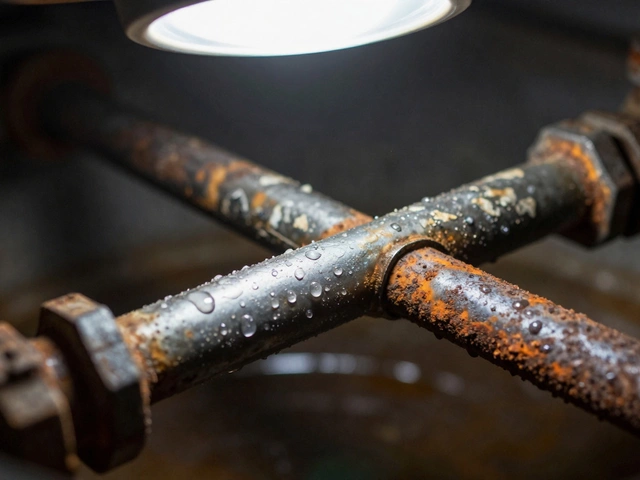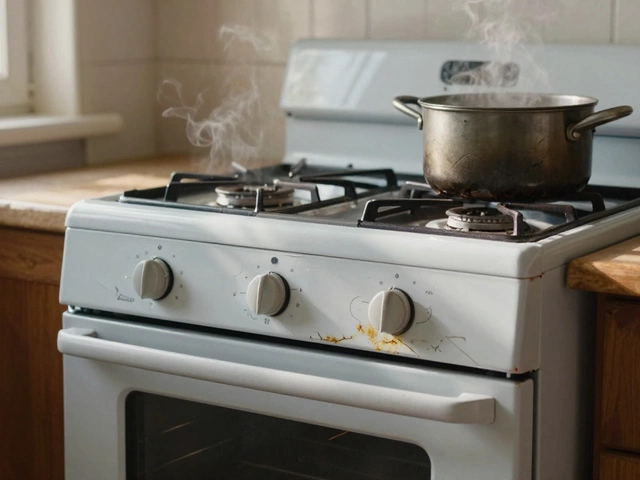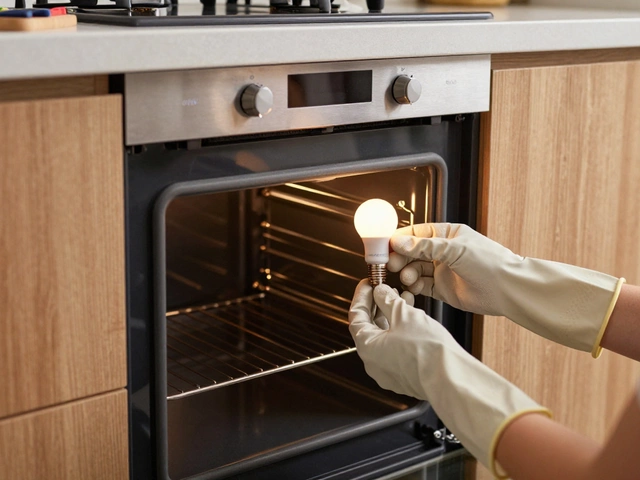Water heaters often suffer underappreciation until they leave us stranded in a cold shower. Yet, they are the unsung heroes of our daily routines, providing comfort and warmth when needed most. Understanding what typically breaks on these appliances is vital for both prevention and swift resolution.
Delving into the common failures like a misbehaving thermostat or a burnt-out heating element can equip you with the know-how to diagnose the problem swiftly. Instead of plunging straight into costly replacements or professional repairs, a basic understanding could help you manage occasional hiccups.
In this article, we'll explore frequent troubles that may arise with your water heater, what causes them, and handy tips you can employ to keep your heater running proficiently. So, let’s get you on the path to being a hero of household repairs.
- Common Water Heater Problems
- Thermostat Troubles
- Heating Element Failures
- Preventative Maintenance Tips
Common Water Heater Problems
When it comes to our home's unswerving knights in shining armor, water heaters round out the top contenders, earning their keep especially in colder months. Yet, much like any other household appliance, water heaters can face several hurdles that, if left unattended, may lead to uncomfortable, icy encounters or even severe water damage. One prevalent issue is the water heater's inability to produce hot water, typically caused by malfunctioning thermostats or burnt-out heating elements. Identifying whether the trouble lies in these components can often seem daunting to the uninitiated, which is why understanding its symptoms is crucial. Often, a tell-tale sign would be water that just doesn't get hot enough, even when the idyllic temperature settings are right in place.
Sediment build-up stands out as another common villain, sneaking into the water heater's tank without much notice. Over time, minerals and debris from the water supply settle at the bottom of the tank, reducing the appliance's efficiency and even causing pops or cracking noises. These sounds are not to be mistaken as just part of the heater's usual operations but are cries for help, urging an immediate flush to avoid more serious repairs later. Regular maintenance can thwart this problem effectively.
The menace of leaks should also not be underestimated. Often originating from the valves or the tank itself, leaks can unleash a steady uprising in water bills and lasting damage to the home if left unchecked. Pinpointing the leak's exact source, whether it's the temperature and pressure relief valve or the seams of the tank, is the first step toward salvaging the heater and your home.
Noise, while seemingly benign, can hint at a remedy-needing water heater. When the once-silent appliance starts echoing with unusual noises, it's time to listen up. Banging, clanging, or rumbling may suggest anything from sediment build-up to issues with the heating element. Listening to your heater—quite literally—can save you from a rude awakening. As the esteemed New Zealand energy expert Dr. Jan Polatschek said,
"Regular maintenance is not just about extending appliance life; it's about ensuring uninterrupted comfort and energy efficiency—key elements for well-functioning water systems."
To navigate through these troubles efficiently, it’s imperative that homeowners know when to probe a little deeper and when it might be time to call in a professional. A key takeaway is to perform regular checks and maintenance—flush the tank annually, inspect the anode rod every couple of years, and always watch for any signs of leaks or unusual behavior. These steps will not only help you mitigate the immediate issues but might stave off unexpected breakdowns, allowing your trusty water heater to stay in top form.
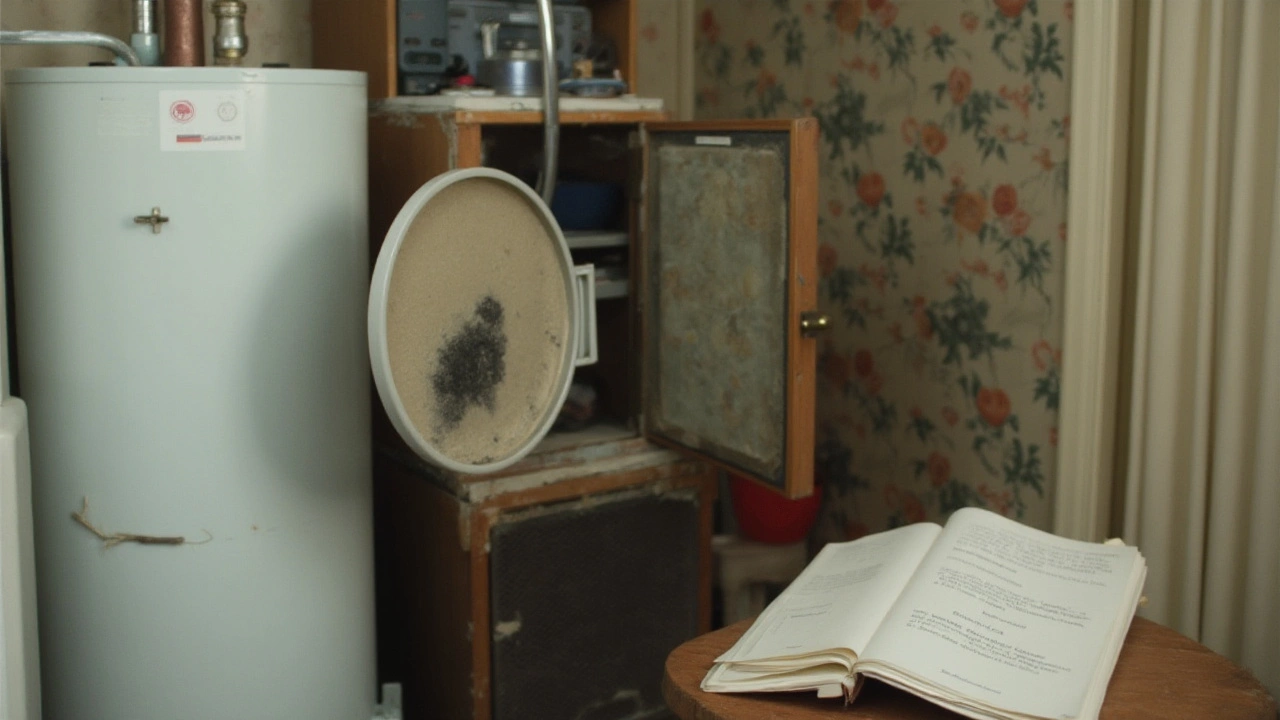
Thermostat Troubles
The thermostat is like the brain of your water heater, governing the temperature of the water and keeping it at the cozy warmth you're accustomed to. When it starts misbehaving, the water heater might either stop heating water entirely, or on the other end of the spectrum, heat it up to steaming, scalding temperatures. Both situations are unwanted, as they lead to discomfort and can even pose safety risks. Many people underestimate the pivotal role of this component, often looking elsewhere for the source of their hot water woes when, in reality, it could just be a simple thermostat tweak or replacement.
Now, what makes a thermostat fail? A common culprit is a poor electrical connection. Over time, wires can get loose or corroded, leading to interruptions in the thermostat's ability to properly gauge and maintain the desired temperature. Another common issue is simple wear and tear; these components are not invincible and can give out after years of relentless use. A more obvious indication of thermostat trouble is inconsistency – at times delivering lukewarm showers while at other times overheating the water beyond recognition.
Diagnosing Thermostat Issues
If your water heater is acting up, it could very well be a thermostat problem. To diagnose, always turn off power to the heater first to ensure safety. Using a multimeter, a tool not unfamiliar to most DIY enthusiasts, you can check if there’s power flowing through the thermostat. If the readings are off, it's a good sign that this might be your problem area. It’s crucial to identify if it’s a high or low thermostat issue, as many water heaters are equipped with both to ensure a balanced temperature throughout. If unsure, seeking professional help can often be the wisest and safest choice.
"It’s often a case of aging or electrical mishap," says John Kirk, a certified water heater technician. "Each issue may look different, but they mostly trace back to these common faults."
Replacement and Adjustment
Replacements are not as daunting as they might appear. With instructions laid out step-by-step within most product manuals, and some videos available online, a person with basic handyman skills might tackle this project over a weekend. The process requires cutting power, removing the panel, disconnecting wires, and then replacing the faulty component. Adjustments, conversely, can be as simple as turning a dial to your desired setting. Most thermostats have easily accessible panels for adjustments, so this minor fix should not be overlooked before assuming the worst.
Prevention is Key
A little preventive care can go a long way in keeping thermostat troubles at bay. Regular inspections, checking for loose wires and corrosion, can keep the water heater's thermostat functioning correctly for a longer period. Annual maintenance, while often overlooked, is instrumental in the long-term operation of any water heater. Implementing a habit of annual checks may save you more than just money; it can greatly reduce surprise ice-cold showers or unexpected boiling hazards. These small, yet meaningful practices can ensure the water heater remains an asset rather than a potential peril in your home.
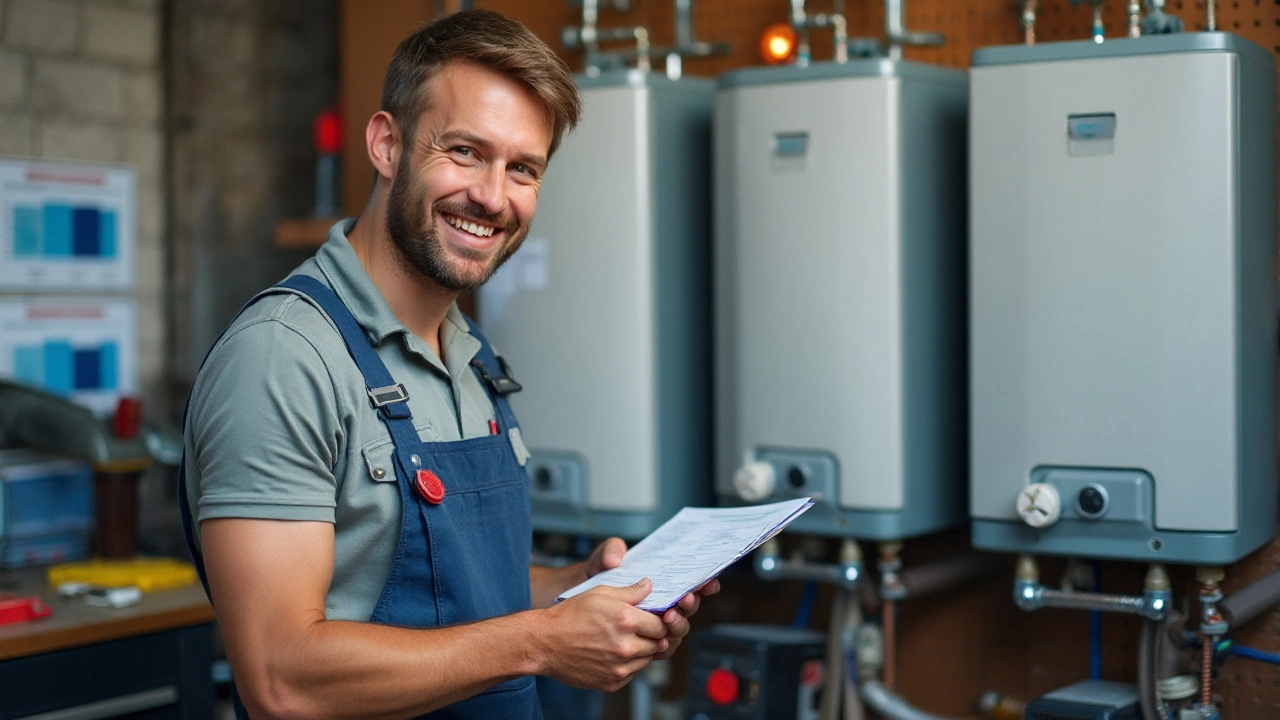
Heating Element Failures
One of the most frequent culprits when the hot water runs out is a failure in the heating element. These essential components are responsible for warming the water stored within the tank and when they fail, it can leave you with little more than a lukewarm dribble from the tap. Heating elements work hard to meet your hot water demands, but they are not invincible. Over time, they can burn out—a fate typically met when they're forced to heat water in an empty tank, which can severely shorten their lifespan. This problem is more common in areas where water is harder, as minerals tend to accumulate inside the tank and encase the elements, causing them to overwork.
To check if your heater’s element might be at fault, start by cutting off the power supply to your water heater. Take extra care as this involves working with electricity around water, which is never a good mix. Once it's safe, remove the access panels and insulation, uncovering the thermostat and element. Using a multimeter, inspect the element for continuity. If the reading is erratic or zero, it's likely the element needs replacing. Sometimes this issue is just the wear and tear of constant heating cycles, but often, it is aggravated by sediment corroding the element. Consistent noises from your tank are a solid clue that sediment is building up. It's essential to flush your tank regularly to maintain peak efficiency. Replacing a faulty element is something most handy folks can do with a few basic tools, plus replacement elements are relatively inexpensive.
Interestingly, modern innovations are looking to tackle water heater issues better. Some high-efficiency models are emerging with self-cleaning features, drastically reducing sediment build-up. A survey conducted in 2023 by the Water Heater Research Institute showed that these models reported fewer failures over their lifetime compared to traditional water heaters. If you reside in an area with hard water, it may be worth considering these models as your next upgrade rather than frequent element replacements. As Alex Smith, a leading home appliance technician once remarked,
"Most homeowners overlook the subtle signals their heaters give them. Just by paying a little attention, they can save themselves cold showers and big repair bills."
Dealing with a broken element might not be the most enticing task, but it's surely rewarding when that inviting rush of hot water returns. It’s always a good strategy to be proactive rather than reactive, so performing a yearly check-up can prevent surprises. Investing in a water softener could extend the life of your heater dramatically, making those system checks worthwhile.

Preventative Maintenance Tips
Keeping your water heater in top condition isn't just about fixing it when it breaks. It's about nurturing it through regular care which can extend its life and improve efficiency. One fundamental habit should be to check the temperature settings. Many models are pre-set to 140 degrees Fahrenheit, but dialing it down to 120 degrees can do wonders for saving energy and preventing scalding, especially while having minimal impact on your hot water supply. Lower temperatures can also help reduce mineral buildup and corrosion in the tank and pipes. Some studies have found that a 10-degree reduction can save 3-5% on your water heating costs.
Flushing your tank periodically is another maintenance step that can prevent issues involving sediment buildup. Sediment accumulates over time, and if left unchecked, it can cause inefficiencies, damage to heating elements, and unwelcome noises like banging or popping. To flush the tank, be sure to first turn off the power supply to the heater and allow it to cool down. Then, connect a garden hose to the drain valve and lead the water to a safe drainage point. Open the drain valve and let the water flow until it runs clear. This practice, if done bi-annually, can seriously extend the lifespan of your water heater.
Additionally, it's essential to test the pressure relief valve regularly. This valve is a vital safety component that releases pressure if it gets too high inside the tank, preventing potential damage or even an explosion. To check, place a bucket under the discharge tube, then gently lift the valve's lever to let some water flow. If it trickles out or doesn’t release, the valve might need replacement. Ignoring a faulty valve is a safety risk because it can't relieve pressure properly, so this small checkup can be crucial.
"Routine annual maintenance on water heaters can save homeowners from unexpected failures and costly repairs," says Chris Salvati, a renowned plumbing expert.
Another tip is to consider adding insulation to your heater and pipes. Many older water heaters are not well-insulated, which can lead to significant heat loss. An insulating jacket around the tank, sold at most hardware stores, can reduce standby heat losses by up to 45% and save up to 10% annually on water heating costs. Also, insulating your hot water pipes can help to maintain higher water temperatures for water that is far from the heater itself, which can allow you to set a lower thermostat setting.
If your water heater isn’t in the most convenient location to carry out these checks, you might need to schedule regular inspections with a plumber. This inspection can include checking and replacing the anode rod, an essential component that protects the tank from rusting. With a bit of know-how and regular attention to these areas, your water heater can enjoy a longer, more productive life, keeping your showers warm and satisfying.




